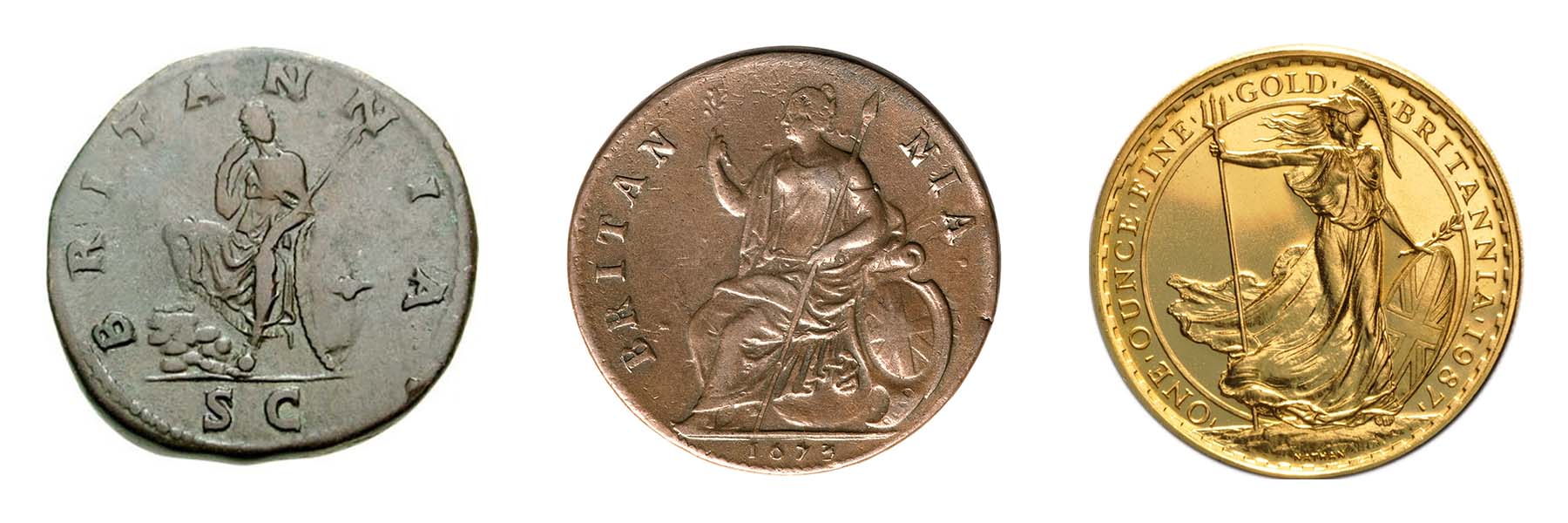
The History of the Britannia Coin
Britannia coins were first issued by the Royal Mint in 1987 to satisfy the demand for larger precious metal coins. They are so-called because the reverse features different depictions of the goddess Britannia, the personification of Great Britain.
It was during the reign of the Roman Emperor Hadrian who reigned from 117 - 138 CE that she first appears on a coin. She is somewhat similar to today's depictions and was shown seated on rocks, resting one hand on her shield and holding either a spear or military standard in the other. Following the collapse of the Roman Empire in 476 CE she did not appear on a coin again until 1672, a farthing of Charles II, when she became a mainstay on British copper coins. In 1797 her spear was replaced by a trident, a symbol reflecting Britain's naval superiority, and from 1825 she is depicted wearing a Corinthian helmet, thus Britannia as we know her today was born.

The Royal Mint struck the first Britannia coins 1987, these coins contain a millesimal fineness of 22ct/.917/91.7% of gold, the non-precious element being copper until 1989 and then silver from 1990. From 1987 - 2012, these coins had a total weight of 32.45 grams and contain 31.1 grams (1 troy ounce) of 24ct/.999 gold. In 2013 the diameter of these coins was reduced from 40.00mm to 38.6mm and total weight reduced from 32.45 grams to 31.21 grams, this adjustment recalibrated the total fineness of these coins to 24ct/.999/99.9% with an actual gold weight of 1 troy ounce (31.1 grams). Britannia coins were originally issued in denominations of £10 (1/10 oz), £25 (1/4 oz), £50 (1/2 oz) and £100 (1 oz) with 50 pence (1/40 oz) and £1 (1/20 oz) produced from 2014 and 2013 respectively. Larger denominations of £200 (2 oz), £500 (5 oz) and £800 (30 oz) were issued in very limited quantities for select years from 2019, 2013 and 2017 respectively.

Reverse of a 1987 British ounce gold Britannia, the first issue, showing a more regal figure of Britannia
Due to their face value and status as legal tender, gold Britannia coins are exempt from Capital Gains Tax and VAT which makes these issues particularly sought after for collectors and investors alike.
Bath Spa Capital offers a range of gold Britannia coins which can be viewed by clicking HERE.